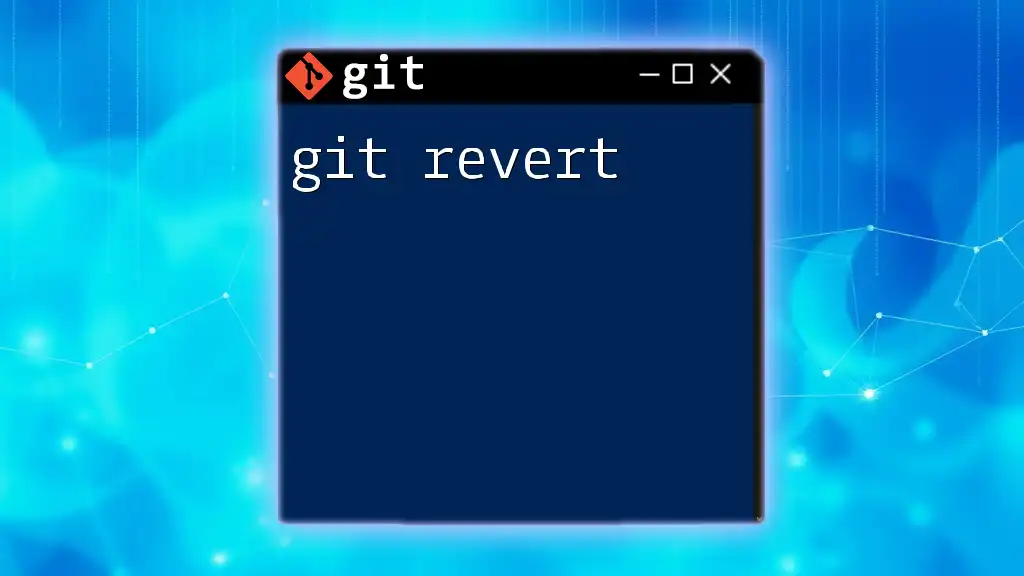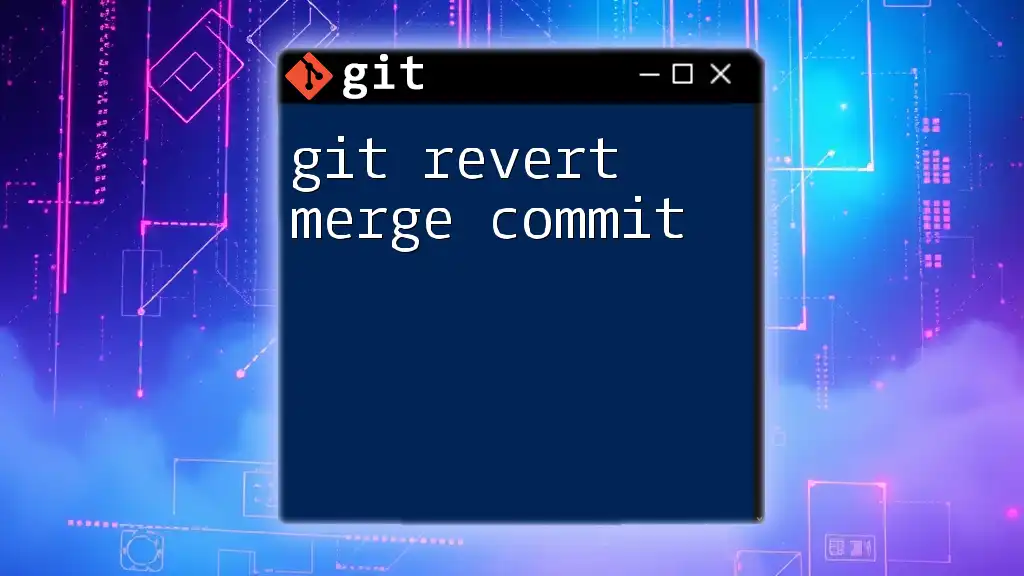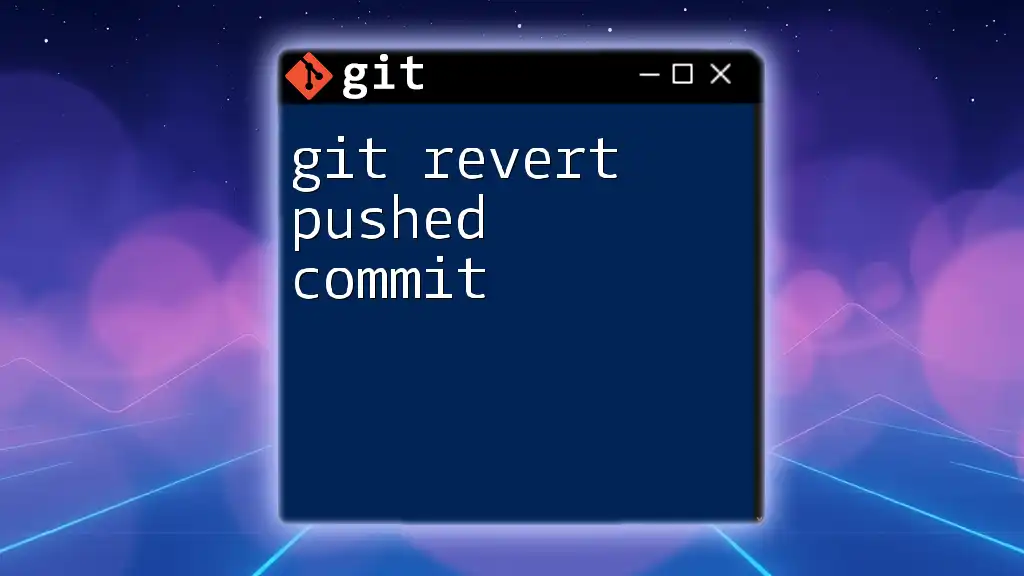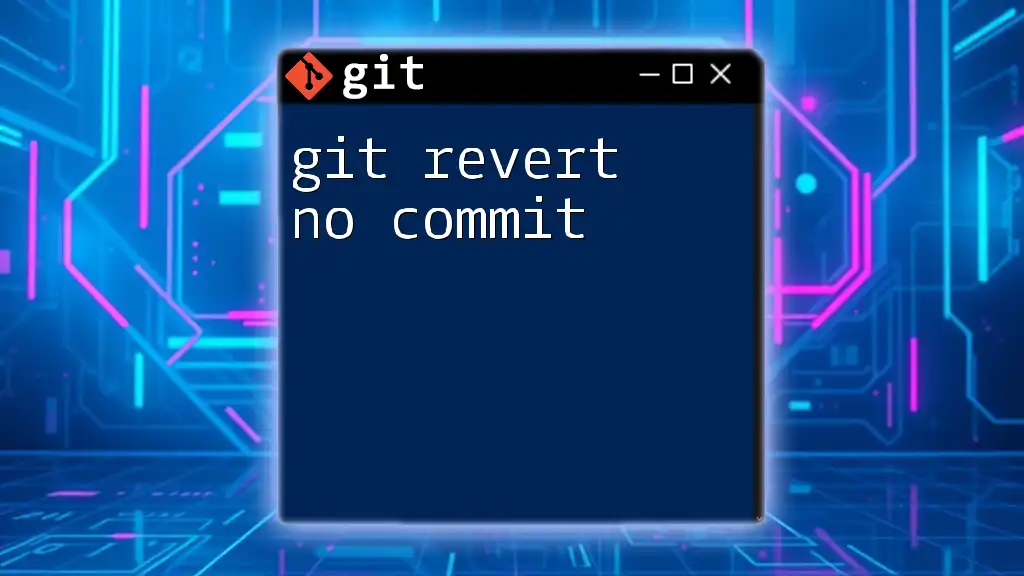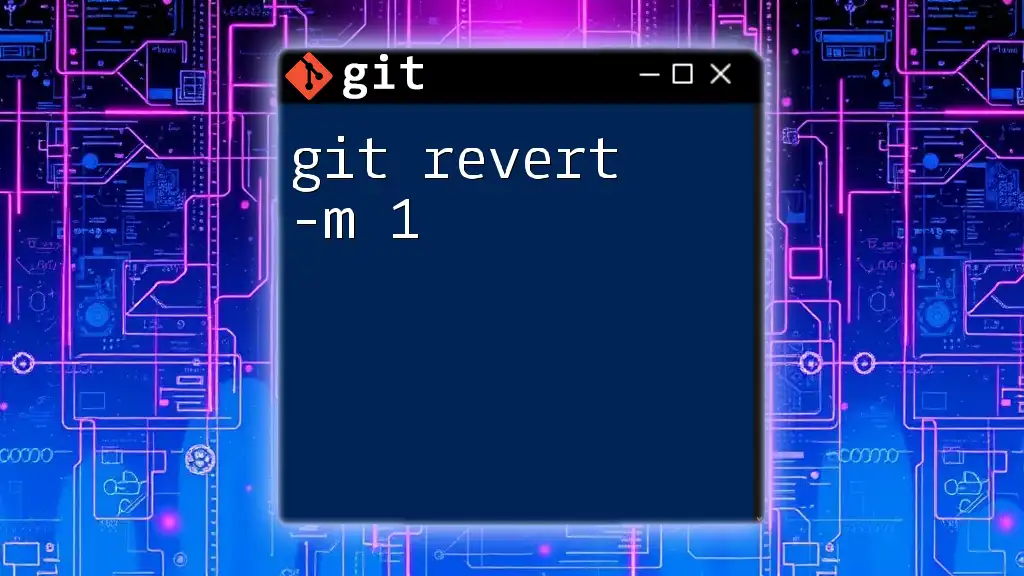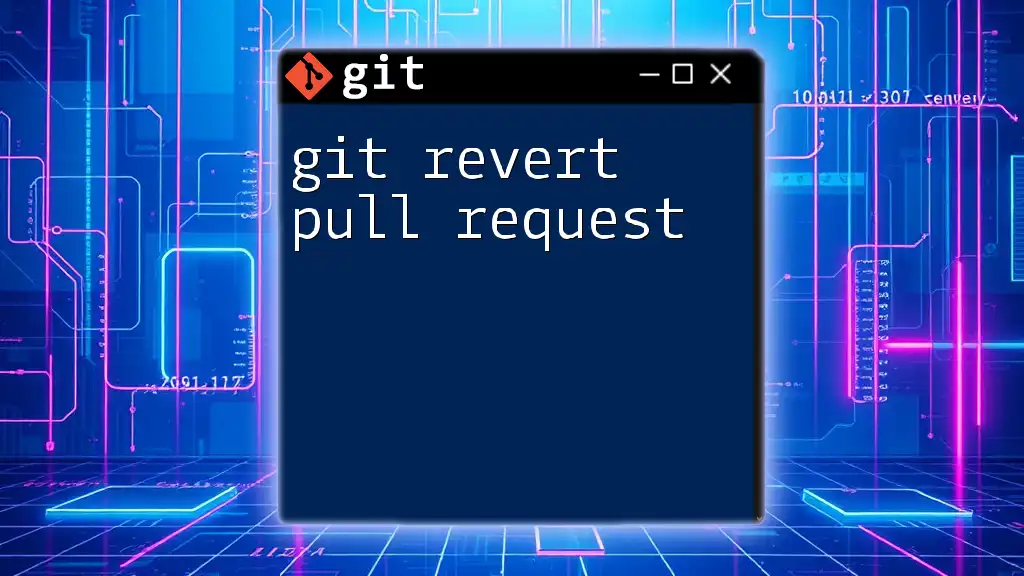`git revert` is a command that creates a new commit undoing the changes made by a previous commit, thereby preserving the project's history.
git revert <commit_hash>
What is Git Revert?
Definition
The `git revert` command serves a critical function in version control, allowing developers to reverse changes made in a commit without altering the commit history. Unlike `git reset`, which can delete commits and associated changes entirely from the project history, `git revert` creates a new commit that effectively undoes the modifications made by a previous commit. This approach ensures that the integrity of the commit history is maintained, allowing for easy tracking of all changes made throughout the project's lifecycle.
When to Use Git Revert
Reverting is particularly advantageous in scenarios where a change is found to be problematic after it has been applied. For instance:
- Bug Fixes: You discover that a recent bug fix introduced new issues, and reverting the change could be the quickest way to stabilize the project.
- Experimental Features: If an experimental feature was merged and is not delivering the expected results, reverting the commit allows you to remove it swiftly without the need for complex operations.
In these situations, `git revert` is often the safest and most effective option.
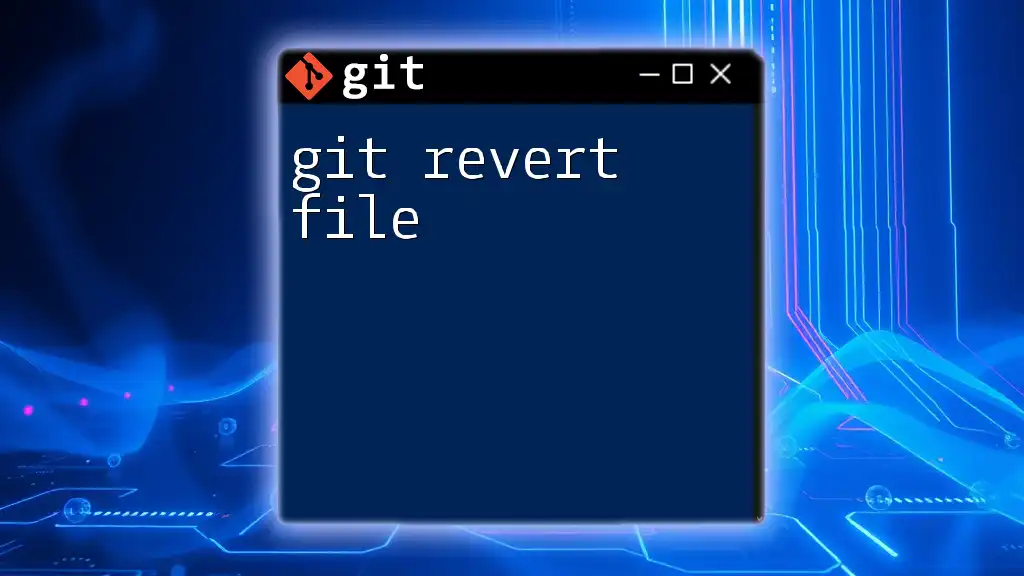
Understanding the Git Revert Process
The Mechanics of Git Revert
When you execute a `git revert` command, it creates a new commit that reverses the changes from the specified commit. This new commit is appended to the current branch. By doing this, the commit history remains linear and intact, making it easy for other developers to understand the evolution of the project.
Safety of Git Revert
One key advantage of using `git revert` is its safety. Because it does not eliminate past commits, it avoids the complications that can arise from rewriting history. This feature is essential in collaborative environments where multiple developers are working on the same branch. By preserving history, everyone involved can see what changes were made and why.
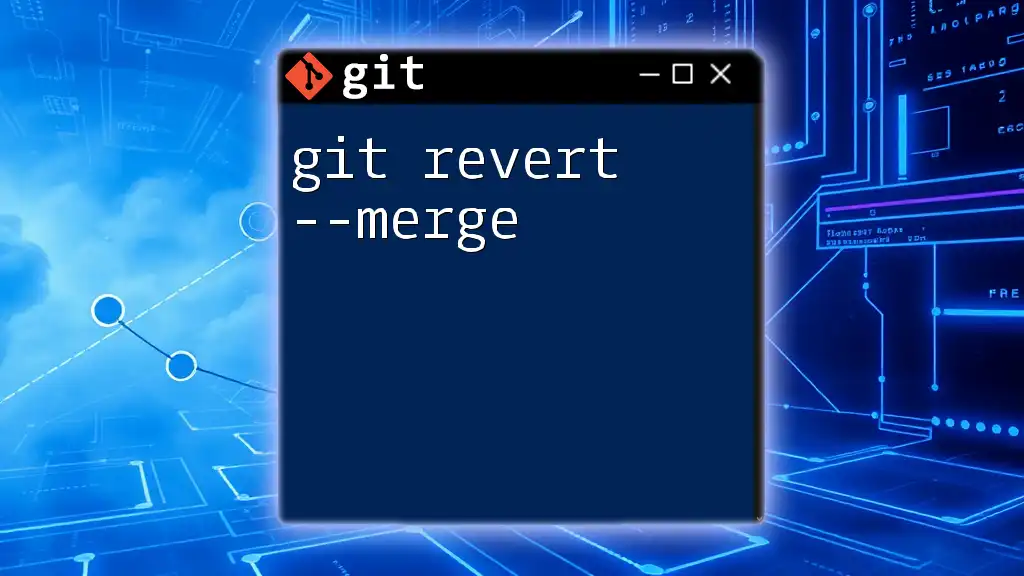
Syntax of Git Revert
Default Syntax
The basic syntax of the `git revert` command is straightforward:
git revert <commit_sha>
Here, `<commit_sha>` is the identifier of the commit you wish to revert.
Options and Flags
While the default syntax is sufficient for many use cases, `git revert` offers several options to modify its behavior:
- `-n` or `--no-commit`: Applies the revert but does not create a new commit immediately. This allows you to make additional changes before committing.
- `-e` or `--edit`: Opens the commit message editor, allowing you to modify the default message generated for the revert commit.
- `--no-edit`: Ignores the editor and uses the default commit message without any modifications.
These options give you flexibility in how you handle the revert process.
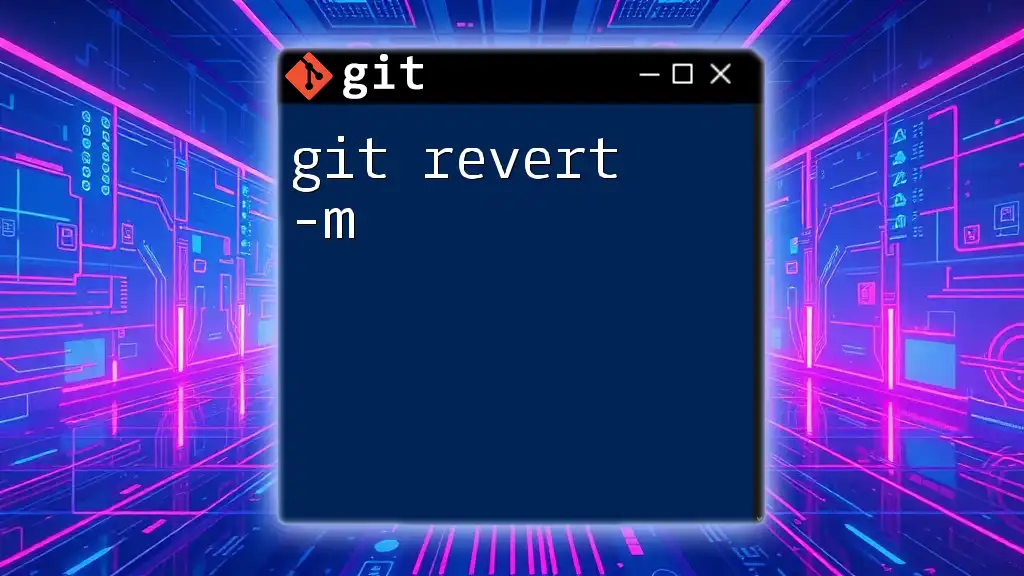
Step-by-Step Usage of Git Revert
Reverting a Single Commit
Reverting a single commit is a simple and effective way to address problems in your project:
-
Identifying the Commit to Revert: Use `git log` to find the SHA of the commit you wish to undo.
git log -
Executing the Command: Use `git revert` with the identified commit SHA.
git revert abc1234 -
Verifying the Changes: After executing the revert command, check your files and git status to ensure the changes were applied correctly.
Reverting Multiple Commits
To revert multiple commits in a single command, simply list each commit SHA:
git revert commit1 commit2
This method allows you to streamline the process when tackling multiple problematic commits at once.
Resolving Merge Conflicts During Revert
Occasionally, you may encounter merge conflicts when trying to revert a commit. Conflicts can arise if the files that were changed in the commit being reverted have also been modified in subsequent commits. Here’s how to resolve those conflicts:
-
Identify the Conflict: After attempting to revert, `git` will notify you of any conflicts.
-
Use `git status`: Check the status to see which files are conflicted.
git status -
Manually Edit: Open the conflicted files, resolve the differences, and save your changes.
-
Mark as Resolved: After resolving the conflicts, mark the changes as resolved using:
git add <resolved_file> -
Finalize the Revert: Complete the revert process by committing the changes:
git commit -m "Resolved conflicts during revert"
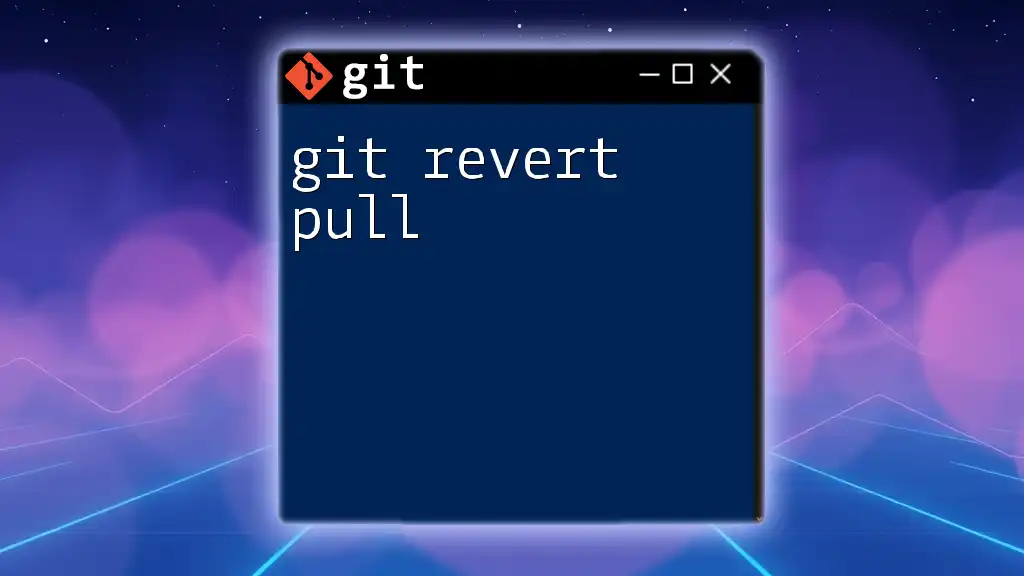
Best Practices for Using Git Revert
Maintain a Clean Commit History
When using `git revert`, it's essential to maintain a clear and organized commit history. Using descriptive messages for revert commits will help you and your collaborators understand changes easily in the future.
Testing Before Reverting
Before executing a revert, it’s advisable to thoroughly test your code to ascertain that reverting the commit is indeed the appropriate action. Employ testing frameworks and practices to ensure the stability of your project before making any changes.
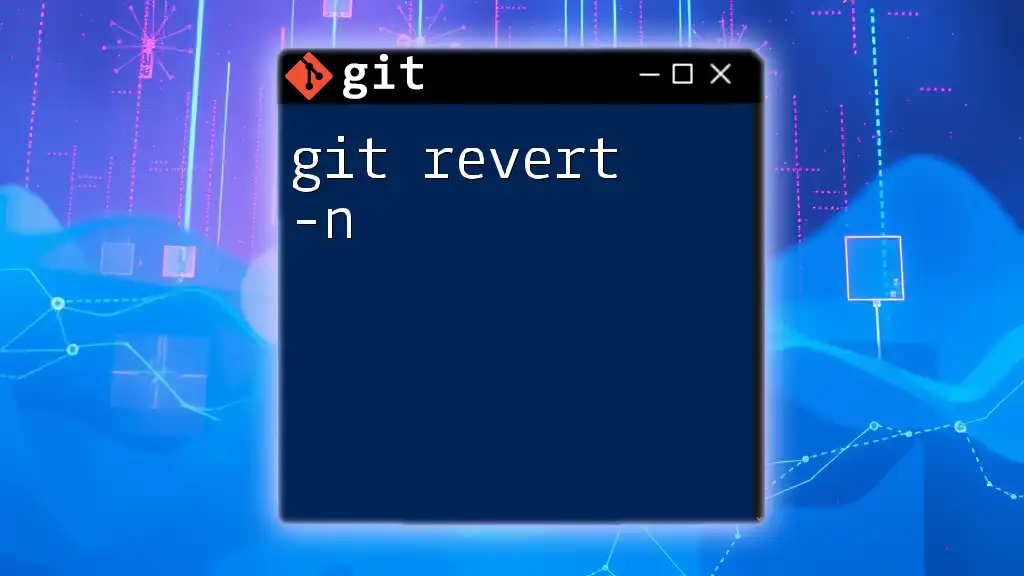
Common Misconceptions about Git Revert
Revert vs. Reset
A common misconception is that `git revert` serves the same function as `git reset`. While both commands are used to undo changes, they operate quite differently. `git reset` can delete commits from the history, which may lead to data loss in collaborative situations. In contrast, `git revert` preserves all commits and simply adds a new one that negates the changes from a previous commit.
Undoing a Revert
Sometimes you might need to undo a revert if it turns out the original changes were, in fact, necessary. You can use the following command to revert a revert:
git revert <revert_commit_sha>
This command creates a new commit that applies the changes you initially reverted, effectively reinstating the previous state.
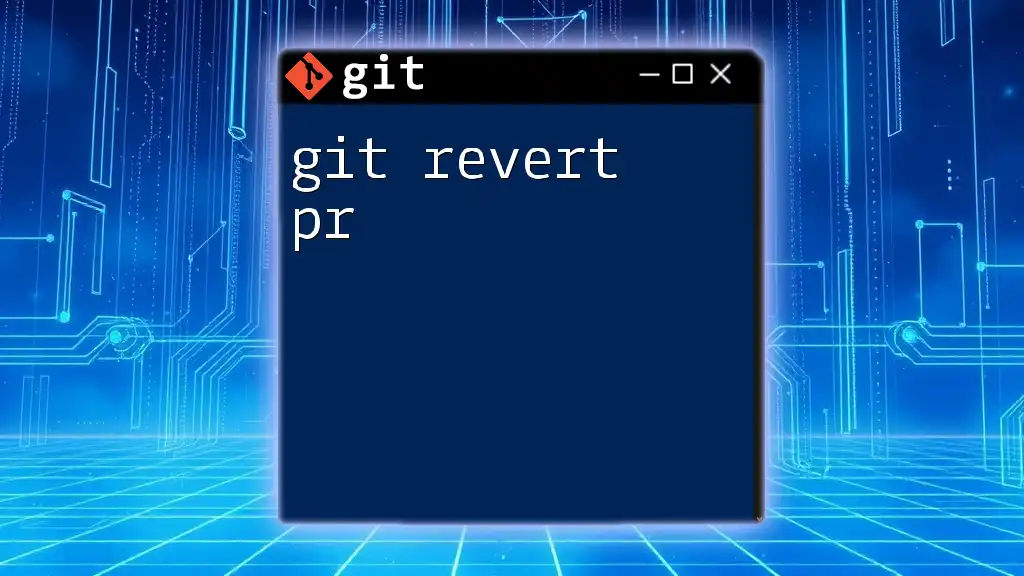
Conclusion
Using `git revert` effectively can greatly enhance your workflow and project management in Git. It allows developers to maintain a clean history while providing a straightforward method to undo errors without consequence. Practicing the usage of `git revert` will empower you as a developer to manage your code confidently and responsibly.
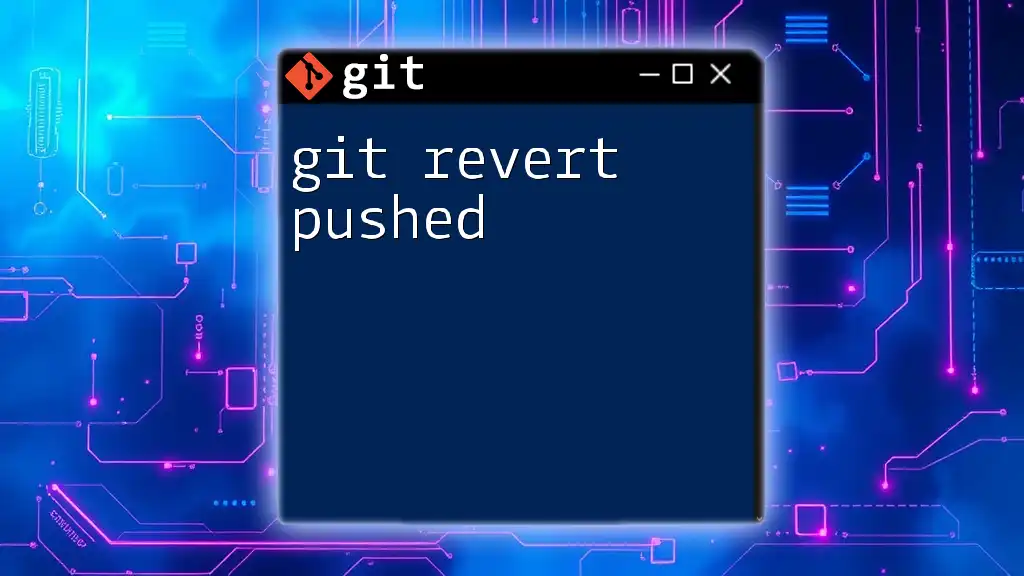
Additional Resources
Links to Official Documentation
For a deeper understanding of the `git revert` command and its nuances, refer to the [official Git documentation](https://git-scm.com/docs/git-revert).
Recommended Tools
Explore various Git GUI tools that can help visualize changes and make the usage of commands like `git revert` more intuitive.
Community and Support
For additional help and discussions on `git revert`, community platforms such as GitHub discussions and dedicated programming forums are excellent resources.
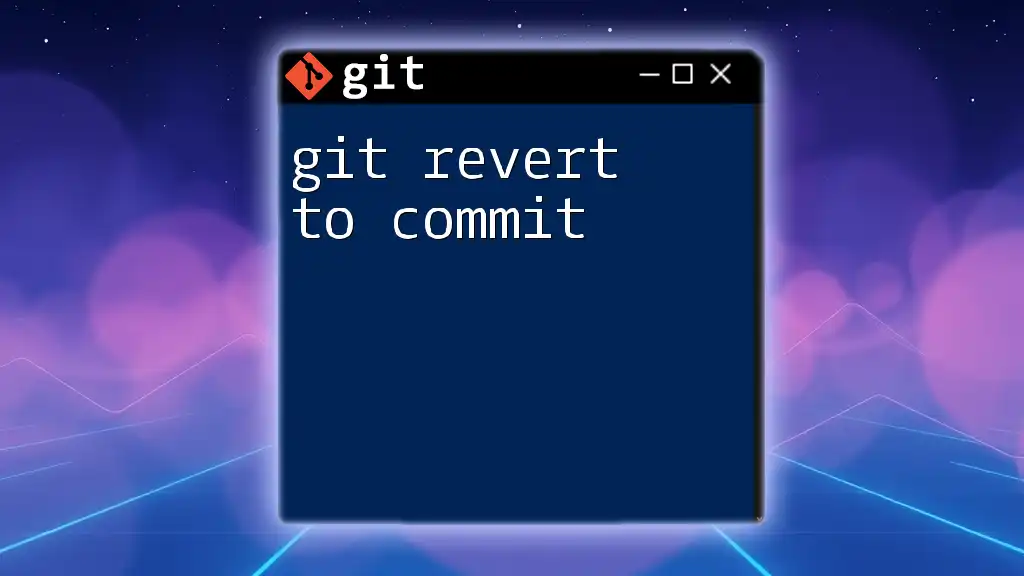
Call to Action
Have you recently used `git revert`? Share your experiences and insights in the comments below! If you're interested in mastering Git commands quickly, consider subscribing for more concise tutorials and best practices!

